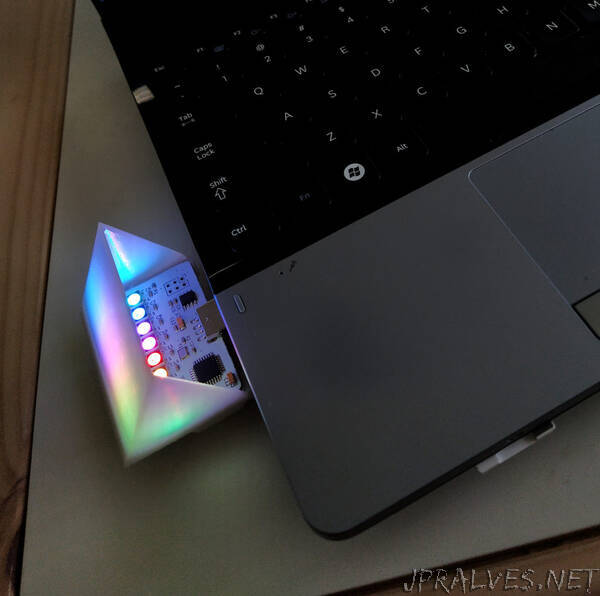
“Electric prism is a USB-powered night light which can be programmed using Arduino development tools. This project was born out of a desire to do a simple circuit board design at home, that I would actually use. My first attempt at this was a really simple design with just white colored LEDs. After gaining some experience with programmable color LEDs, I decided to incorporate these and a few other elements in my current design.
While my initial plans for the project were personal, I’m now exploring the possibility that this could be an educational tool. Yes, the world is already full of STEM products like robots and powerful dev boards. But, how many kid-friendly robots are sitting in a corner somewhere because their fun and usefulness wore off? How many learning-friendly dev boards are sitting in a box because it’s hard to come up with a project idea? The Electric Prism could be a tool that exposes children to the world of embedded programming and also gives them something they can use immediately in their home. What if they were donated to a class and children were able bring them home and reprogram them? Maybe the next generation could welcome more people into the somewhat exclusive world of embedded programming.
A side benefit of this project is that it makes use of the ubiquitous 5V USB power bricks that we all have laying around the house. Recent articles speculate that the next iPhone may ship without a power adapter – something that is not merely a cost reduction measure, but also an attempt to reduce the e-waste generated by so many gadgets shipping with their own power brick. An advantage to using this as a power source is that the components of this design utilize a 5V supply, therefore no voltage regulator is needed.
The Specs and Considerations
◦ ATMEGA328P 8-bit microcontroller [The brains of the operation]
◦ 8x WS2812B Programmable Red-Green-Blue LEDs
◦ USB Type-A Jack [Plug straight into your computer or a USB power adapter]
◦ CH330N USB-UART transceiver [How this thing talks to your computer]
◦ Photodiode Ambient light sensor
◦ Capacitance-sensing pads arranged to be used as a touch slider”
